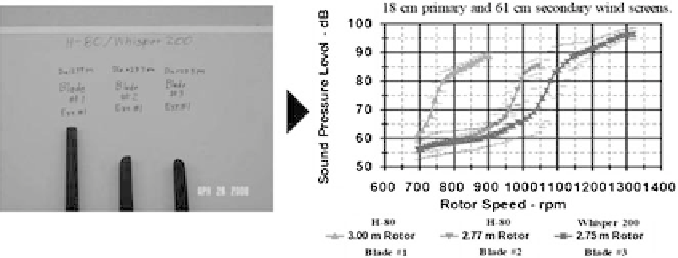Environmental Engineering Reference
In-Depth Information
Figure 12: Three different blade tip geometries and the three corresponding noise
levels.
can affect the nature of the sound generation from the wind turbine during power
regulation. In general domestic wind turbines apart from noise effects can generate
vibration signals which are transmitted through the walls causing annoyance to
people inside the house. Ways to deal with those problems are associated with
increased wall insulation and with locating the turbine at a distance from the resi-
dential areas at a height over 3 m from the ground and often being kept switched
off during the night.
7 Noise standards
Currently, there are no common international noise standards or regulations for
sound pressure levels from wind turbines. Every country, however, defi nes noise
limits and regulations for human exposure depending on the time of the day.
A standard that is being internationally used is:
International Electrotechnical Commission IEC 61400-11 Standard: Wind turbine
generator systems - Part 11: Acoustic noise measurement techniques [21].
The IEC 61400-11 standard defi nes:
The quality, type and calibration of instrumentation to be used for sound and
wind speed measurements.
Locations and types of measurements to be made.
Data reduction and reporting requirements.
The standard requires measurements of broad band sound, sound levels in
one-third octave bands and in narrow-bands. These measurements are all used to
determine the sound power level of the wind turbine.
8 Present and future
Noise from wind turbines is an issue that is gaining increasing concern for govern-
ment bodies, regulators and the public. The pressure on governments to cut carbon

Search WWH ::

Custom Search